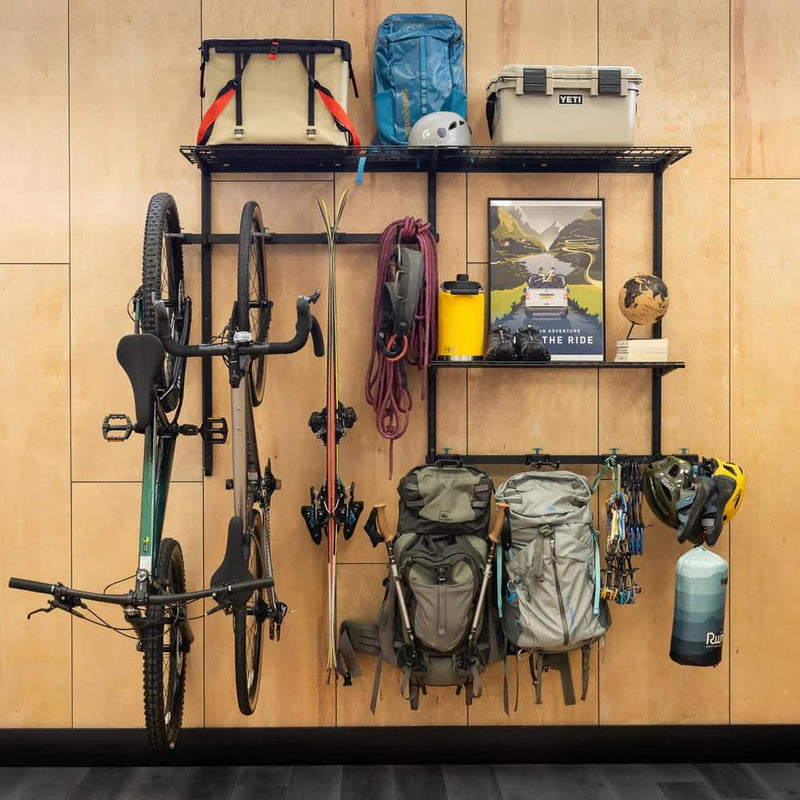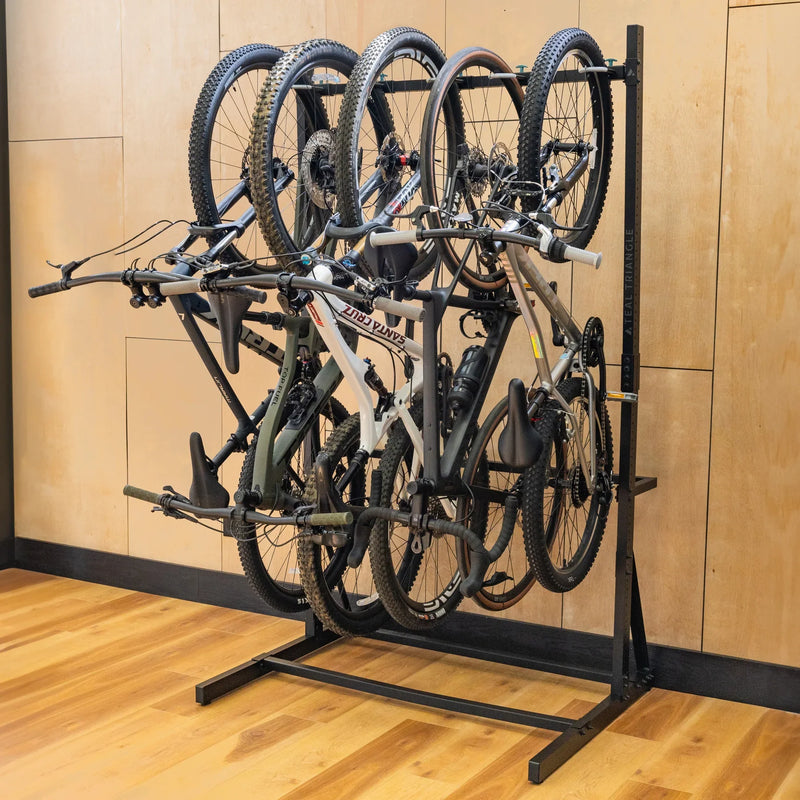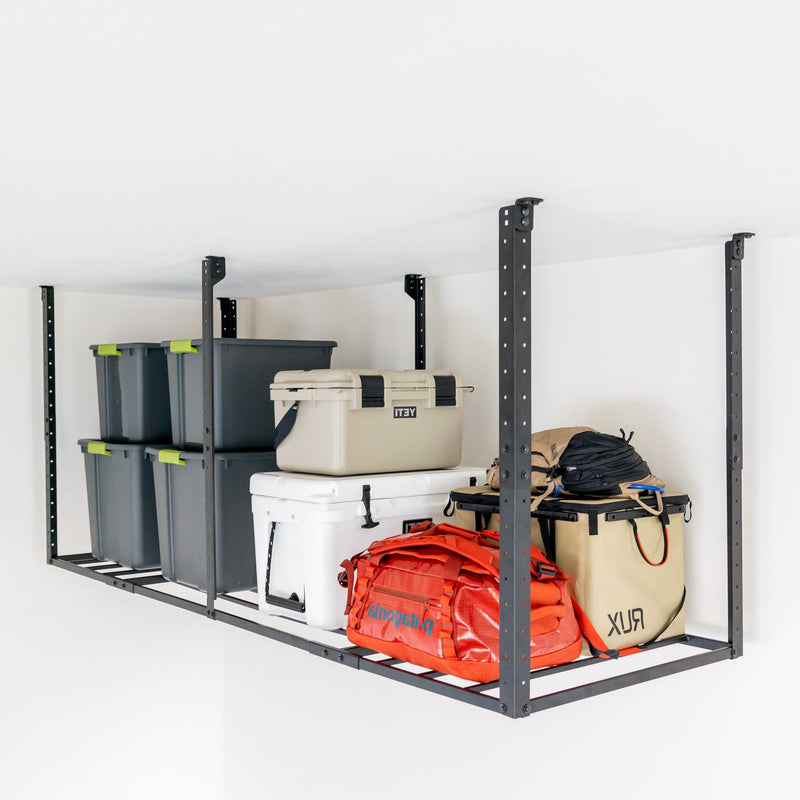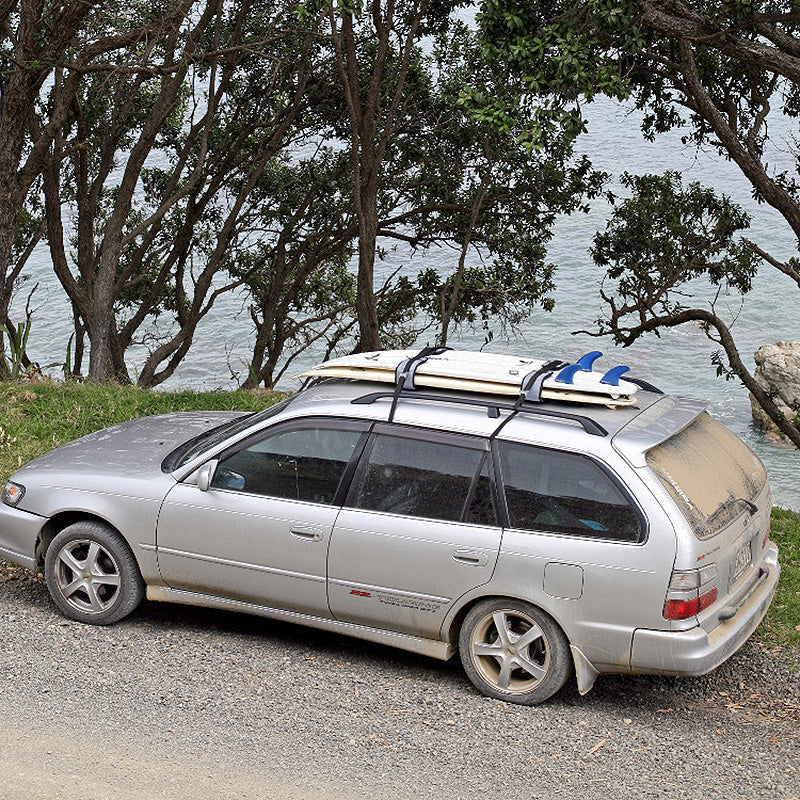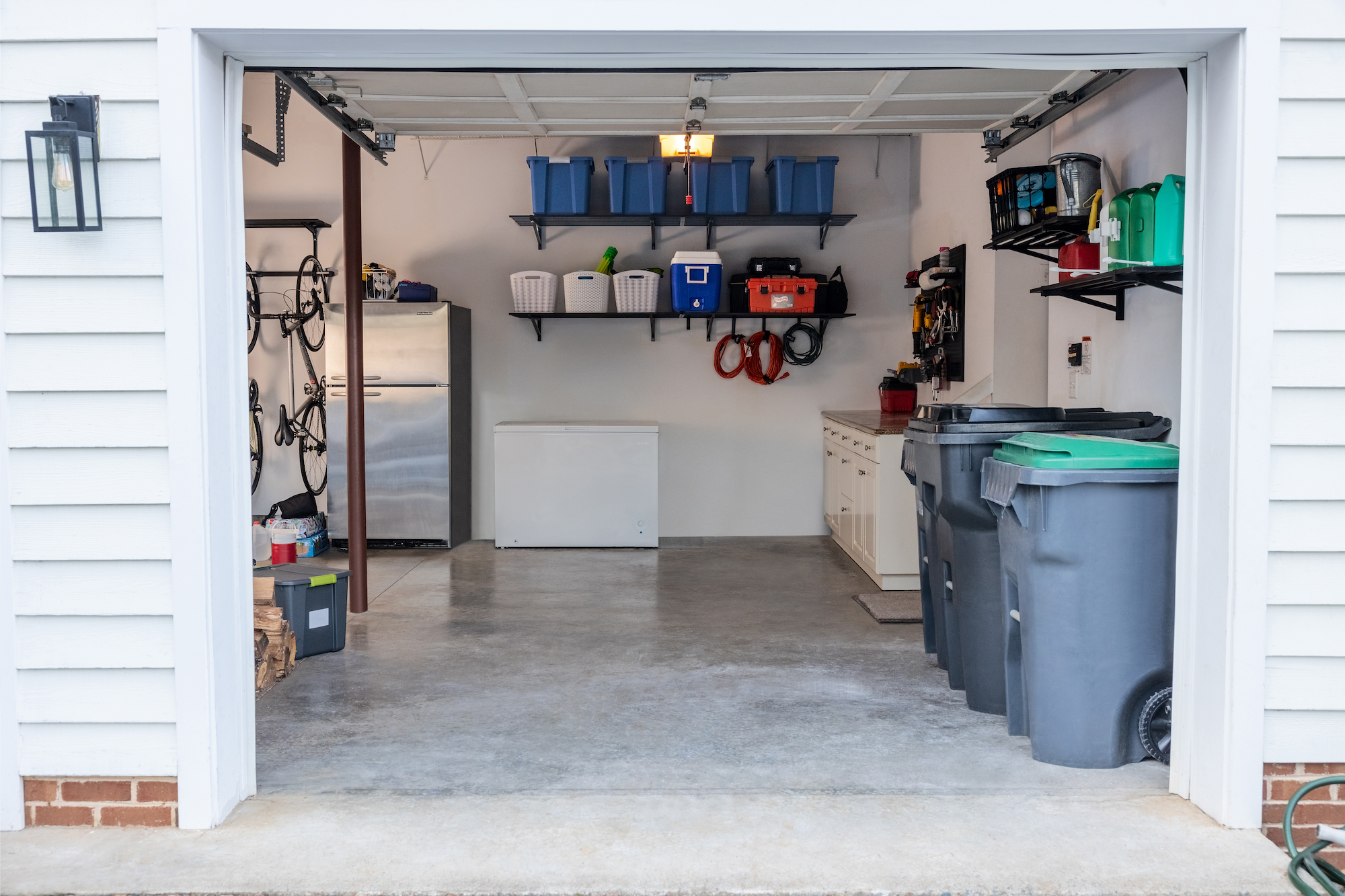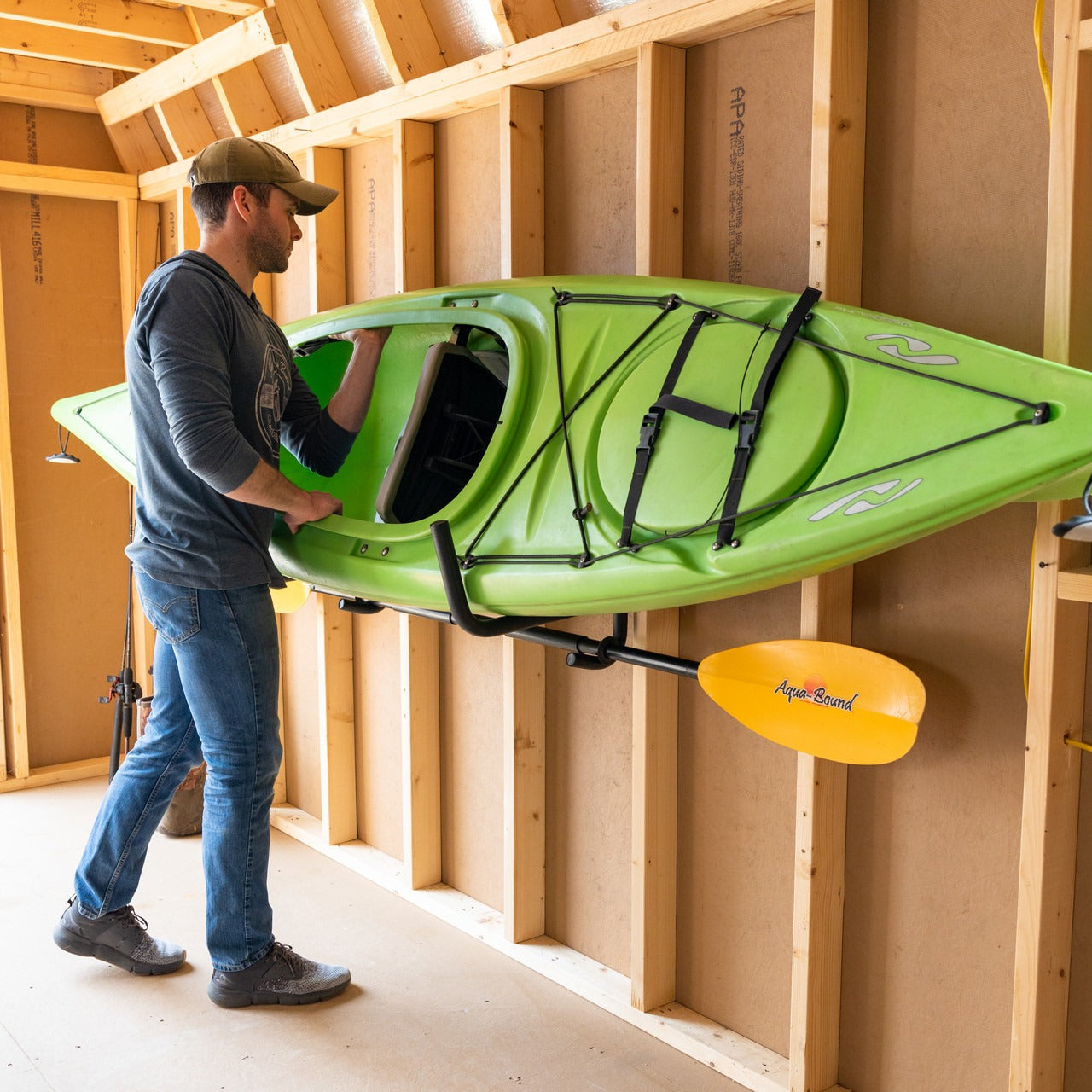As much fun as they are for spending time on the water, kayaks are difficult to store once you’re back at home. You could store them outside, but that may leave your watercraft susceptible to sun damage, standing water, cobwebs, and more. At the very least, your kayak will require a clean-up before use.
The obvious solution is to store your kayak in the garage. However, this option can be daunting because kayaks take up so much space. Depending on the size of your garage, deciding to store your kayak inside can mean the difference between parking your car in the garage and leaving it in the driveway.
No matter what size your garage is, there’s a storage solution that can help you take charge of your space, store your kayaks indoors, and still have room to park your car. By making the most of space-efficient wall racks and often-overlooked ceiling storage, you can make your garage work for you and gear.
There are many types of kayak wall storage out there, but you should be careful to avoid those that take up too much space for a small garage. One common style of kayak storage rack uses arms that extend almost perpendicularly from the wall. While this is a great option for multi-kayak storage, it also takes up a lot of space that could impede your ability to use the garage for parking your car.
Now that you know the type of storage not to get for a small garage, you’re ready to move on to some options for space-efficient wall storage. The ideal wall rack will hold your kayak with its hull toward the garage wall, or on a slant in this direction. In this configuration, you minimize the amount that the kayak extends from the wall and encroaches on the rest of your open garage space.
One rack that combines space-efficiency and storage is the Swivel Kayak Rack, which cradles the kayak on durable foam-coated arms. You’ll also keep your space looking neat with the built-in paddle hook, so you can keep your gear together and organized. A feature that makes the Swivel Kayak Rack stand out from other like it is its swiveling arms; when not in use, the arms swivel to lay flat against the wall, which is the ultimate space-saver.

Another option for wall-mounted storage is the Roanoke Pro Kayak Rack. This one has a similar design to the Swivel Kayak Rack, including a discreet notch on the arms to tuck away your paddle. However, it comes with one crucial extra feature to consider: it includes safety straps that wrap around your kayak to eliminate pressure points and protect it from pressure-related hull distortion. After loading your kayak onto the rack, you simply tighten the straps to raise it off the narrow arms. This setup combines ease of loading onto the storage rack with protection during storage. With an even distribution of weight during storage, the hull no longer holds the entire weight of the watercraft, and you can store your kayak for a weekend or a season without worry.
These two exceptional kayak wall storage racks have the best of both worlds when it comes to wall racks and space-efficient storage solutions. Even in a one-car garage, you’ll be able to store your kayak and also park your car inside. And, since they take up minimal wall space, you’ll have extra room above and below the rack for even more storage.
If you haven’t gotten acquainted with your garage ceiling as a space for storage, now is the time. For this next area of kayak storage, we’re going overhead.
You are missing out on square footage that could be used to up your organization game if you’re not already using your garage ceiling for storage. Overhead racks can reduce tripping hazards, help you stow seasonal items, keep the “ground-level” looking neat, and more. It’s especially convenient for kayaks because it frees up floor space, but keeps your watercraft nearby and accessible for adventures on the water. In terms of ways to store a kayak without letting it take over your garage, overhead storage is tough to beat.
It’s important to consider your space and particular kayak when choosing a rack. As experts in the kayak storage game, we’re recommending two different types of kayak racks for the ceiling: the adjustable mount and the hoist.

The adjustable mount style of overhead rack, like the Hi-Port 2, holds your kayak with foam-padded arms. One of its greatest advantages is the 90-degree rotational base, which allows the rack to fit most ceiling joists, whether they run vertically or horizontally. It comes in two sizes: the Hi-Port for one kayak and the Hi-Port 2 for two kayaks. The rack also allows you to adjust the vertical post—extend it fully for larger kayaks, or retract it closer to the ceiling for thinner items.

The other type of ceiling storage for kayaks, the hoist, conveniently lets you load your kayak on the ground and use the rope to raise your watercraft to the ceiling (in contrast to other ceiling racks that require the use of a ladder for loading and unloading). This design allows for some independence, since you can get it from the floor to the ceiling with just one person. The Teal Triangle Elite Hoist is an updated, upgraded pulley system made for helping you raise your unwieldy items overhead for a more harmonious space. If you have especially long items to store, such as racing kayaks or sea kayaks, this is the best option for giving you your space back and keeping your kayaks accessible.
No matter which type of kayak storage you decide on, you can be sure of a few things:
- Even in a small garage, you will reclaim your floor space to use on your own terms.
- Your kayaks will be protected from the elements, as well as theft. You won’t have to do a deep clean every time you head out to the water, since indoor storage shields your kayak from damages.
- Your garage will look cleaner and more organized. The right storage elevates your space to the next level. A small change can make a huge impact on the atmosphere of your home.
Enjoy all your extra space!


